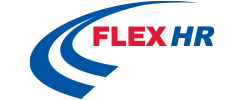Diversity, Equity, Inclusion and Accessibility
Population demographics continue to grow more diverse in our communities and the business environment is dynamically responding to these changes. The human resources initiative that encompasses diversity in the workplace is called Diversity, Equity and Inclusion, or DEI. Sometimes it is also referred to as Diversity, Equity, Inclusion, and Accessibility or DEIA, to include those who are disabled and need more accessibility in the workplace.
Research shows that companies with more diversity in their leadership and employee ranks are more innovative, have better employee engagement, employee retention, productivity, and are more profitable than their less diverse competitors. This diversity exists with gender, race, age, ability, sexual orientation, and ethnicity, among other areas. Afterall, more diverse companies can better service more diverse sets of clients.
Benefits of assessing different types of diversity:
- Age diversity brings varied perspectives of different generations and their priorities.
- Ethnic diversity helps shape products, features, and services around a varied group of cultural traditions.
- People with varying physical ability and neurodiversity bring different and unique perspectives of disabled people and their specific needs.
DEI initiatives are one of the most sought-after attributes of an organization. It is imperative that employers and their HR departments ensure these DEI efforts are integrated into the goals of the company’s culture. Leaders need to assess the diversity in their ranks when looking at their management team and their employees.


What does diversity in an organization look like?
There isn’t a cookie cutter approach to achieving greater diversity in a company. Diversity in organizations can sometimes be more easily achieved in certain industries and in particular geographic locations.
Larger companies, such as those with 500 employees or more, use in-house talent acquisition experts along with recruitment technology software to draw in a diverse talent pool or help to uncover unconscious recruitment bias. Larger companies tend to offer strategic diversity training programs for their employees and managers. Flex HR provides a consultant to help with the strategy diversity training program for managers, employees and recruiters.
For small and medium sized businesses, and in certain industries and geographic locations, achieving diversity goals can be harder. These businesses might be relying primarily on friends and current employees for referrals and do not have access to various recruitment technologies. There might be limited funds for diversity plans, training, and the like, and certain industries naturally don’t cater to diverse sets of employees.
 Achieve Diversity Ranks Throughout the Organization
Achieve Diversity Ranks Throughout the Organization
The environment within your organization should be equitable for all ranks of employees. HR professionals should evaluate the salaries of people in the organization and ensure that pay equity is being achieved. In addition, make sure that there are equal opportunities for promotion in your organization. Creating DEI efforts alongside workforce development programs produces an efficient, diverse, empowered, and high-performing staff.
Reach out to your most diverse clients, to see if they could refer any potential employees to you, or scope out he community at large, to gather information about your products, services, and ideas about making your own organization more approachable.
When recruiting, focus on additions to your company, rather than a strict background fit. Attend job fairs that represent different cultures, ages, or other elements of diversity to find a more varied set of candidates. Talk with recruitment experts for ideas on how to achieve diversity on a smaller scale. Flex HR offers fractional recruitment support to help in this area.
Ensure Inclusion in the Workplace
Once you seek out a more diverse group of people to serve in your organization and provide an equitable experience for the managers and employees, it’s important to think about overall inclusion. Some practical things you can do to make your business more inclusive are as simple as to acknowledge holidays and practices of all cultures in the organization, which will in turn help acknowledge holidays and practices of various cultures within your client base. Be intentionally and respectfully curious of other cultures in your workplace.
Another step to encourage inclusivity is for your management team to also represent the diversity that you want in the organization at large. Managers and leaders need to encourage employee feedback, perhaps through company surveys, that gather information about inclusiveness in the organization.
Create an Equitable Environment
Equity in the workplace recognizes that not all employees are afforded access to the same convivences and privileges. The imbalance of these opportunities needs to be addressed. Therefore, equity within an organization strives to provide all employees with fair and equal opportunities, resources, and treatment based on their individual needs. Equity means employees are valued based on their skills, knowledge, and abilities in a workplace, rather than their characteristics.
Cultivating a work environment that allows its staff to thrive is vital to a company. This is where the HR team needs to step in and build key initiatives such as unconscious bias training in order to stop implicit bias that impacts an employee’s performance. These initiatives should be implemented by disclosing wage data, creating diverse cross-level representation, providing diversity training and education, practicing skills-based hiring, and accommodating for those with health problems or disabilities.
Accessibility Accommodations While On The Job
Finally, you will want to work on accessibility in the organization. Accessibility is defined by the Americans with Disabilities Act (ADA) as “the design of products, devices, services, vehicles, or environments so as to be usable by people with disabilities.” Accessibility can require a specialist or an HR consultant who can help with accommodations. Flex HR can provide a consultant to help advise on accessibility in the workplace. Some easy changes an organization can make is to provide access to ramps, parking, electronic door openers for someone with a physical disability at a building. Other changes to budget for could be a screen reader for websites or alternative text for images for a person with vision issues, or closed captioning within videos for people with hearing problems.
Diversity, equity, inclusion, and accessibility are important areas of the workplace. Business operations don’t press pause while the leader and managers create DEIA change. Flex HR provides talented and trained DEIA experts who can provide fractional support that is budget friendly to achieve the necessary goals and results for your company.

 Achieve Diversity Ranks Throughout the Organization
Achieve Diversity Ranks Throughout the Organization